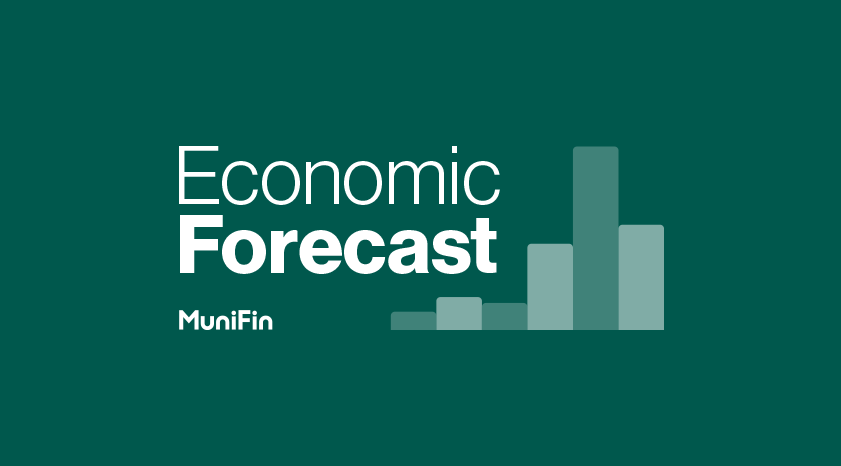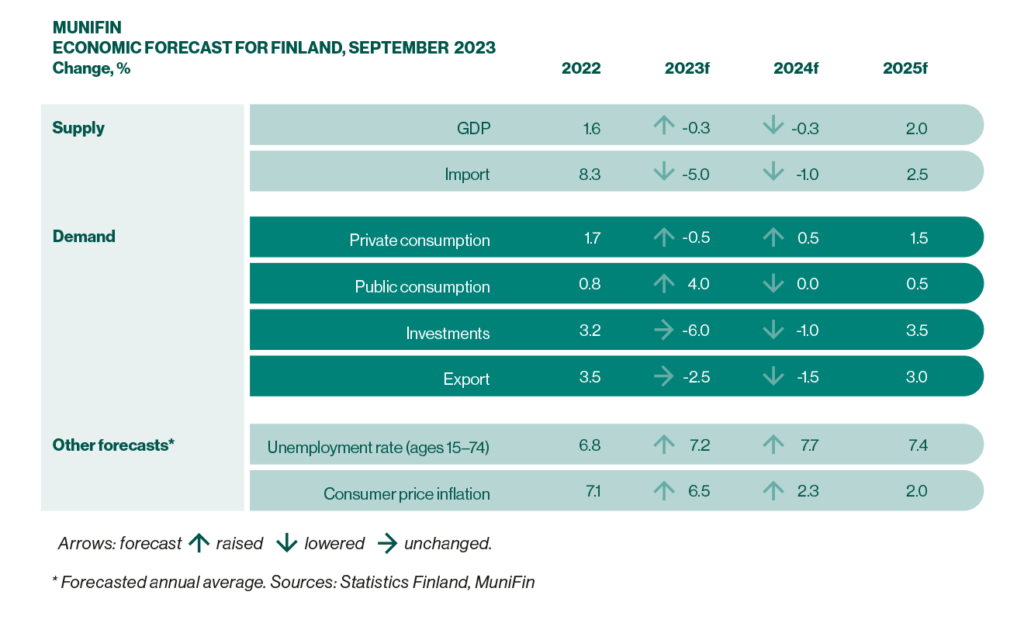
Next year’s GDP forecast down, but green transition provides potential for growth
MuniFin’s economic forecast anticipates a challenging year ahead, with the abrupt slowdown in housing construction exerting a drag on Finland’s economic growth. The route to recovery lies in supporting the sources of growth, and we must seize the opportunities offered by the green transition.

MuniFin has revised its forecast for next year’s economic growth downward by nearly one
percentage point. In the economic forecast published in June, MuniFin projected Finland’s GDP to grow by 0.5% in 2024. The just published September forecast predicts a decrease of 0.3%. The main factors explaining this change are the steep slowdown in housing construction and poor-performing exports.
“The construction sector is particularly affected by the increase in interest rates and material costs, as well as the stagnation in housing sales. There have been numerous bankruptcies, and the industry is a significant employer. The ripple effects of the downturn in the construction sector are expected to be most pronounced in 2024”, according to MuniFin’s Chief Economist Timo Vesala.
MuniFin does not predict a deep or prolonged economic recession. It is also expected that unemployment will only rise moderately.
“Fortunately, the purchasing power of wage earners is starting to rebound, and the peak in interest rates is also on the horizon. However, inflation is proving to be so persistent that we should not expect significant interest rate cuts from the European Central Bank just yet”, Vesala assesses.
The green transition provides the seeds for growth
According to MuniFin’s forecast, achieving economic balance requires productivity improvements and new sources of income. The challenges facing public finances cannot be resolved solely through savings and cutbacks. Fortunately, behind the challenging economic outlook, there are also signs of potential growth.
“Investments of around EUR 140 billion are being planned for the green transition in Finland. It is likely that only a portion of these projects will come to fruition, but even a few percent would provide a much-needed boost for both the national economy and municipalities”, according to Esa Kallio, President and CEO at MuniFin.
The forecast also reminds us that the realisation of these investments necessitates a significant expansion of renewable energy production, requiring investments in electricity transmission capacity and energy storage.
If these investments set off a positive cycle, economic growth could accelerate considerably more than expected. In the best-case scenario, the economy could achieve growth rates in the latter half of the decade that haven’t been witnessed as a sustained trend since the financial crisis, reflects Vesala.